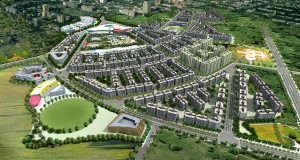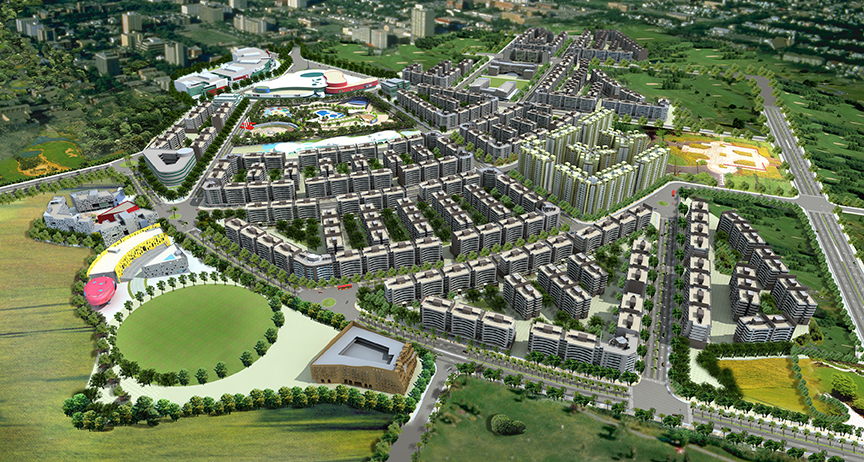Bottom Line: Mumbai’s Development Plan 2034 promises to address the Mumbai realities in general and its housing shortage in particular but grey zones are challenging.
 Within the built environment of Mumbai’s urban planning an impression has gained ground that the Mumbai Development Plan (DP) 2034 is very revolutionary. It is believed that with proposed focus on affordable housing and opening of No Development Zone (NDZ), there will also be good stock of affordable housing and it will certainly affect the demand & supply cycle of city property market.
Within the built environment of Mumbai’s urban planning an impression has gained ground that the Mumbai Development Plan (DP) 2034 is very revolutionary. It is believed that with proposed focus on affordable housing and opening of No Development Zone (NDZ), there will also be good stock of affordable housing and it will certainly affect the demand & supply cycle of city property market.
The larger issue, however, that needs to be debated is that whether the DP 2034 will address the Mumbai realities in general and its housing shortage in particular comprehensively? Will it compromise the natural barriers against the calamities and lead to urban catastrophe? Will there be enough open spaces left for the city to breathe?
Analysts are divided over the issue. One school of thought reminds that the opening of NDZ might provide additional dwelling units, it will definitely compromise the long-term sustainability of the city. Another school of thought says Mumbai is left with no other option and howsoever painful it may be the city planners are left with no other option.
Critics allege that the DP 2034 sacrifices the essential parameters of town planning which includes providing adequate open spaces around buildings, compliance to National Building Code of India and maintaining recreational areas and to provide a wide means of access within a layout.
There is a general apprehension that because of large-scale discretionary concessions given by the planning authority to almost each and every project, it may eventually compromise with the essential requirements once the new DP relaxes the norms. They suggest the DP must ensure that the BMC (Brihan Mumbai Municipal Corporation) should not grant approvals to projects which are devoid of recreational areas, open spaces and fire safety.
USPs of DP 2034
DP 2034 opens NDZs for affordable housing
No Development Zones scrapped and the land categorized as Special Development Zone-I and II
The new Development Plan proposes FSI to accommodate the expected increase in Mumbai’s population
The new DP removes all ambiguity around calculations of what is counted in FSI
Grey zones of DP 2034
There is no clear time frame for implementation of DP 2034
Developers are disincentivized from providing amenities such as additional, parking more than prescribed by MCGM in their projects
Project cost, especially FSI related, may actually go up as most of the additional FSI comes to them linked to Ready Reckoner value
Most of the additional FSI is linked to Ready Reckoner value, thus adding to the project cost
Advocate Aditya Pratap of Bombay High Court categorically says that the Past experience with the ULC (Urban Land Ceiling) which had strong legislative provisions has not been happy. Despite the stipulation that open land had to be built only for mass housing, it did not accomplish its objective for the reason of large-scale violations and non-compliances. Massive housing schemes built on open land such as in Powai, Kandivali etc. bear a testimony where a strong law with strong provisions yet can fail.
“When an enactment such as ULC can fail, the legislatively weaker provisions of DP 2034 are unlikely to succeed. Also, as far as NDZ (No Development Zone) Opening is concerned, unless and until the schemes are themselves executed by a government agency like MHADA, it would fail. Time and again, private developers have demonstrated their inability to create mass housing. It is a rampant practice to construct luxury flats in place of the small flats for mass housing, leaving the economically weaker sections (EWS) in the lurch,” says Aditya.
Vipul Shah, Managing Director, Parinee Group does not agree with the premise when he says that the DP 2034 is focusing on affordable housing and opening of NDZ. However, the demand and supply cycle of the property market has nothing to do with the DP. It is purely dependent on the excess availability and the product available in the market. Secondly, the affordable housing is directly proportional to the ready reckoner land rate and hence actually affordable housing is not completely dependent on DP.
“In my opinion, the new Development Plan proposes FSI to accommodate the expected increase in Mumbai’s population. It is very obvious that both older DPs were planned for a smaller population as compared to actual population that lives in Mumbai today. The new DP finally removes all ambiguity around calculations of what is counted in FSI. Now, there are very few features like minimum prescribed parking by MCGM that can be built and not be accounted for as FSI,” says Shah.
The buyers in Mumbai are nevertheless happy with the new DP. They believe the plan ensures that there would be no future slums as it addresses the core issue of human habitation across the budget segment.
Rajeev Agnihotri, a home seeker in Mumbai feels that the existing plan of the city was not addressing the core issue of affordable housing. But with the controversial zoning of ‘No Development Zones’ (NDZ) scrapped and the categorization of this land as Special Development Zone-I and II, the policy makers have paved way for it to be opened up for the development of affordable housing and civic amenities.
“For a large share of Mumbai working population housing meant a rented dingy accommodation or living in the slums. Houses have for long been the luxury of the select few due to high cost. But the DP 2034 promises to change this housing bias that existed due to policy confusion,” says Agnihotri.
There is no denying that the new DP brings in much-needed simplicity and transparency, and reduces the scope for manipulation. However, there are certain grey areas that need to be addressed yet. There is no clear time frame for implementation of DP 2034. Moreover, the developers are disincentivized from providing amenities such as additional, parking more than prescribed by MCGM in their projects, as they are part of FSI to be paid for but may not generate direct revenue.
A section of developers point out that their project cost, especially FSI related, may actually go up as most of the additional FSI comes to them linked to Ready Reckoner value. Then use of private vehicles has been discouraged by prescribing lesser number of car parking where additional and visitor car parks would be calculated within FSI.
A section of the analysts even question that if the assumptions made on income levels are correct, how does the DP propose to allow for housing for the majority of Mumbai’s population. Will affordable housing remain a part of the puzzle that remains outside the DP’s consideration? How will power, water, road and drainage infrastructure for the excess housing stock be created? It seems the DP 2034 might have touched upon the grey zones of Mumbai real estate, it has not addressed the core issue of affordable housing comprehensively.
By: Ravi Sinha





